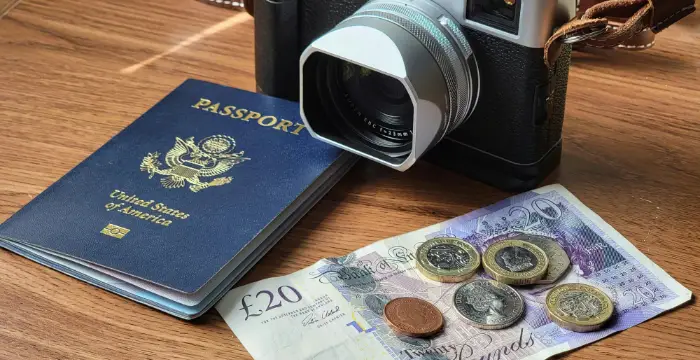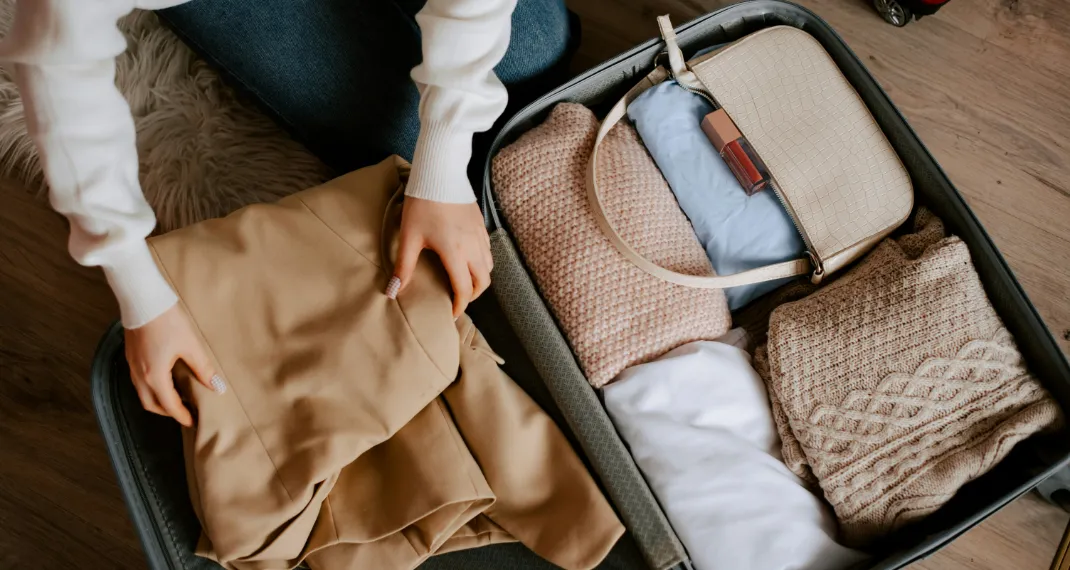The Ultimate Travel Packing Guide
Ever found yourself sitting on your suitcase, struggling to zip it shut or stressing about forgetting something? Then this travel packing guide is for you.
Packing is one of the most challenging aspects of traveling, but it doesn’t have to be. Learning how to pack like a pro can transform the way you travel, saving you time, money and unnecessary stress.
In this guide, we’ll explore expert tips, clever hacks and tried-and-true strategies that will help you maximize space, stay organized and ensure you’re always prepared.
Why Travel Packing Smart Matters
Packing isn’t just about fitting things into a suitcase. The way you pack impacts your entire trip:
- Saves Money: Avoid overweight baggage fees by packing efficiently.
- Reduces Stress: Knowing everything is in its place makes travel smoother.
- Boosts Flexibility: When you travel light, it’s easier to move between destinations.
- Enhances Safety: Organized luggage means important items (like passports) are always easy to find.
Packing smart is about being intentional, bringing what you truly need and leaving behind what you don’t.
Essential Travel Packing Principles Every Traveler Should Know
Before diving into the details, keep these golden rules in mind:
- Less is More – Overpacking leads to heavy bags and clutter. Stick to essentials.
- Versatility Wins – Choose items that mix and match easily.
- Layering is Key – Instead of bulky sweaters, pack light layers you can combine.
- Accessibility Matters – Keep important items easy to reach (medications, documents, chargers).
- Think Climate & Culture – Pack for both the weather and the local customs of your destination.
- Use Travel Packing Apps – Apps like PackPoint, PackTeo and Packr can help you make essentials lists for your destination.
How to Choose the Right Luggage

The right luggage is the foundation of efficient packing.
Suitcases:
- Hard-shell suitcases: Great for fragile items, more durable, but less flexible.
- Soft-shell suitcases: Expandable, lighter and often easier to fit in overhead bins.
Backpacks:
- Best for adventure or minimalist travelers.
- Look for ergonomic straps, multiple compartments and water resistance.
Carry-on vs. Checked Bag:
- If you can, pack in a carry-on only, you’ll save time, money and worry.
- Checked bags are useful for longer trips but carry a risk of delays or loss.
Clothing Hacks: Save Space and Stay Organized

Clothes take up the most space, so mastering clothing strategies is crucial.
Rolling vs. Folding Clothes
- Rolling: Saves space and prevents wrinkles for casual wear.
- Folding: Works better for structured clothing like blazers or dress shirts.
Pro tip: Use a mix, roll casual items, fold formal pieces.
Using Travel Packing Cubes
Packing cubes are a game changer. They help you:
- Separate clothes by category (shirts, pants, underwear).
- Compress bulky items.
- Unpack quickly without making a mess.
The 1-2-3-4-5-6 Rule
For a week-long trip, pack:
- 1 hat
- 2 pairs of shoes
- 3 pairs of pants/skirts
- 4 shirts
- 5 pairs of socks
- 6 sets of underwear
This rule keeps your wardrobe minimal yet versatile.
Toiletries and Personal Care Packing Tips

Toiletries are essential but easy to overpack.
- Use travel-size bottles or solid toiletries (shampoo bars, soap bars).
- Follow TSA 3-1-1 rule: liquids must be in 3.4 oz bottles, fit in 1 quart-size bag and limited to 1 per traveler.
- Don’t forget basics: toothbrush, deodorant, sunscreen and medications.
- Carry essentials in your personal bag, you’ll need them on long flights.
Electronics and Tech Essentials for Travel

Whether it’s for work or leisure, tech plays a huge role in modern travel.
- Smartphone + charger
- Universal adapter (for international trips)
- Power bank (10,000–20,000 mAh recommended)
- Noise-canceling headphones for flights
- Laptop/tablet (if needed)
- Cable organizer to prevent tangles
Optional but useful: e-reader, camera, portable Wi-Fi device.
Important Travel Documents and How to Store Them Safely

Documents are the most important part of packing. Without them, your trip may not even begin.
- Passport + visa (if applicable)
- Boarding passes & tickets
- Hotel reservations
- Travel insurance documents
- Emergency contacts & medical info
- Copies (digital and paper) of IDs
Safety Tip: Keep documents in a waterproof pouch or money belt. Store digital copies in cloud storage.
Packing for Different Types of Trips

Not all trips are created equal, tailor your packing to your travel style.
Weekend Getaway
- Small airline approved carry-on backpack.
- 2–3 versatile outfits.
- Minimal toiletries.
Business Travel
- Wrinkle-free clothing.
- Laptop + charger.
- Business cards & formal wear.
Adventure Travel
- Lightweight backpack.
- Quick-dry clothing.
- Sturdy shoes, first-aid kit and reusable water bottle.
Long-Term Travel
- Capsule wardrobe.
- Multi-purpose items (scarf, convertible backpack).
- Portable laundry kit.
Common Packing Mistakes to Avoid

Even experienced travelers make mistakes. Here’s what to watch out for:
- Overpacking – You’ll regret lugging around things you never use.
- Forgetting Essentials – Make a checklist to avoid panic.
- Not Checking Airline Rules – Different carriers have different baggage limits.
- Ignoring Weather Forecasts – Pack for the climate, not just the season.
- Poor Organization – Throwing everything in your bag leads to chaos.
Final Thoughts: Mastering the Art of Travel Packing
Learning how to pack like a pro is about more than fitting things into a bag, it’s about traveling smarter, lighter and with confidence.
With the right strategies, like using packing cubes, following minimalist rules and choosing versatile clothing, you’ll never stress about packing again.
So next time you plan a trip, remember: pack with intention, not just convenience. The less you carry, the more freedom you’ll have to enjoy your journey.




